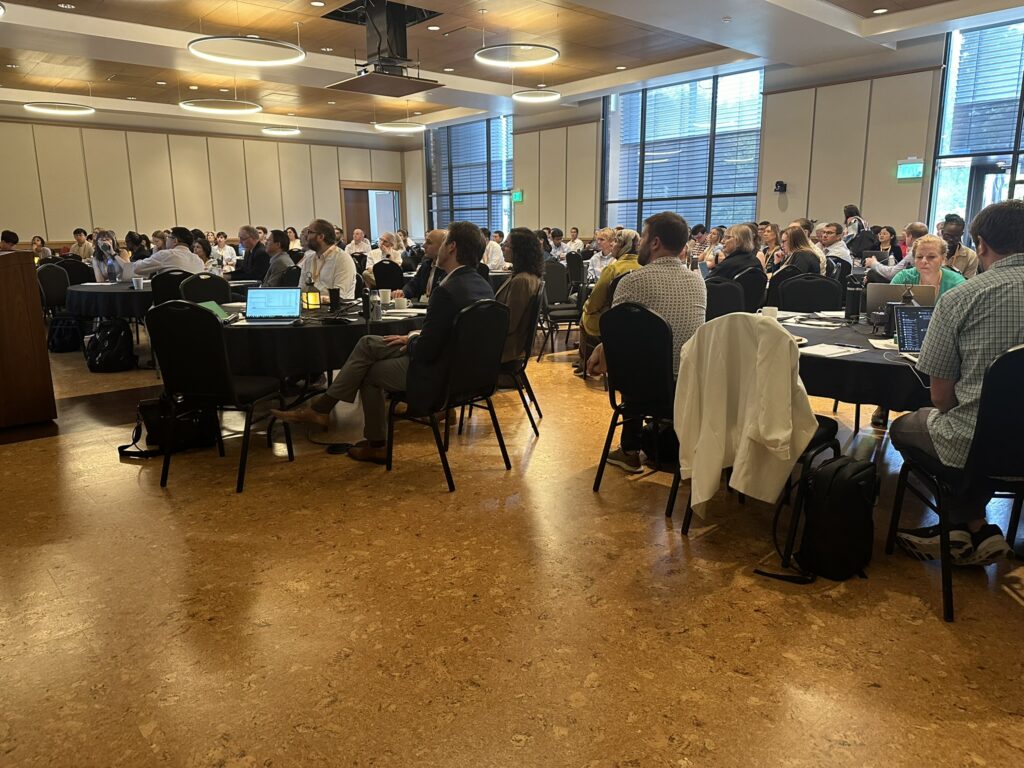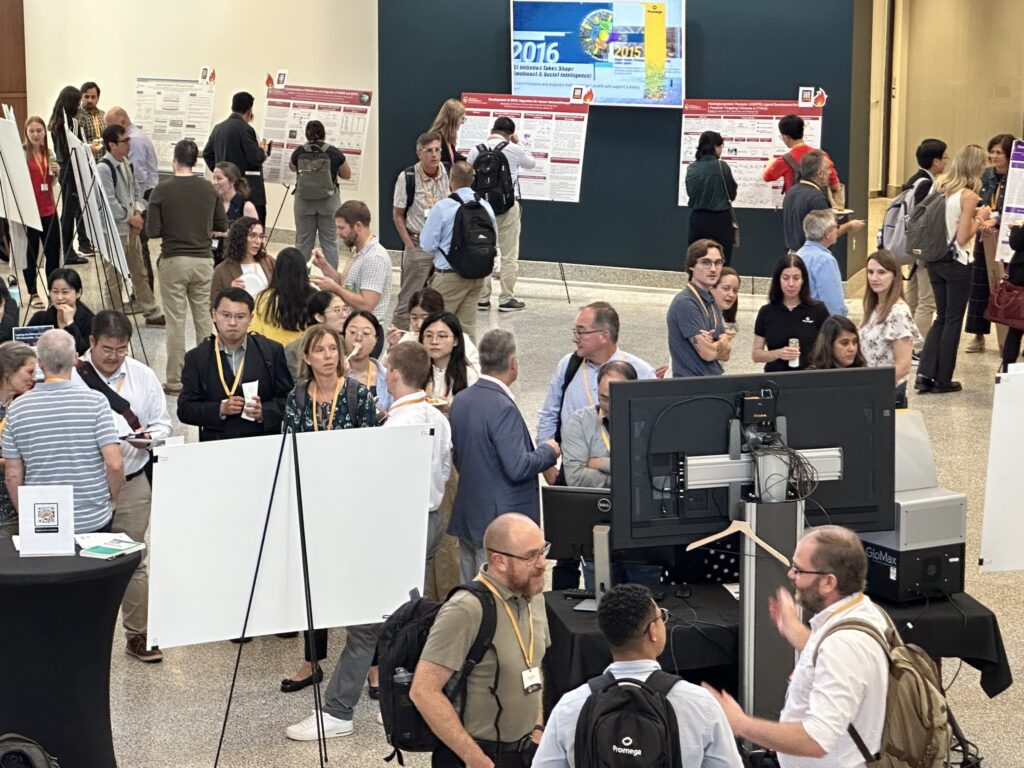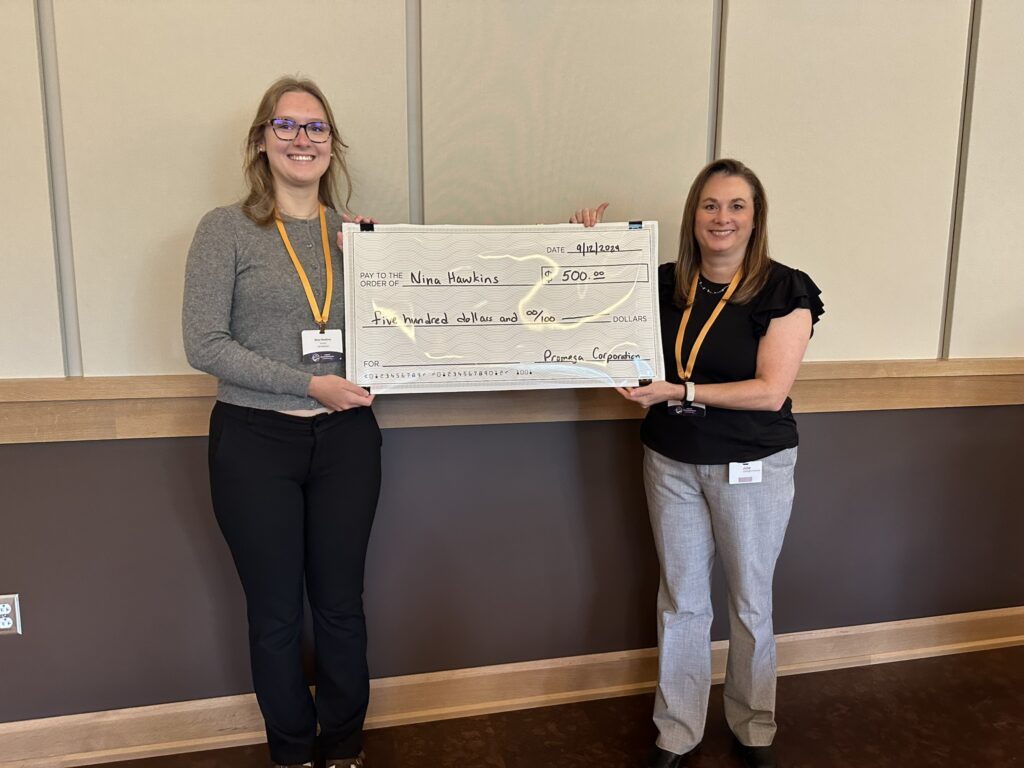
The third annual Targeted Protein Degradation (TPD) Symposium just wrapped up last month. It was kicked off with Poncho Meisenheimer, VP of Research and Development at Promega, likening the gathering of researchers to “kids in a biology candy store.” This playful analogy captured the vibrant energy and sense of exploration among the attendees, who convened to delve into the future possibilities of proximity-induced degradation. Poncho left attendees with three key questions to consider throughout the symposium:
- How can we focus on quantitative measures of cellular events in relevant models?
- How do we generate results that serve both human and AI models?
- How do we best embrace the excitement of discovery?
Nearly 150 participants from both industry and academia attended the two-day symposium. It was held on September 11th and 12th at Promega’s R&D hub, the Kornberg Center, in Madison, Wisconsin. The event, now in its third year, provided a familiar environment where collaborations flourished, and many attendees rekindled connections forged through previous interactions or partnerships in the field.
Innovation Around Every Corner
During the day-and-a-half event, scientists at different career stages presented a wide array of topics. It was particularly exciting to witness former students advancing their careers and establishing their own labs. During the first day, one of the speakers pointed out that a former student of a colleague of theirs was now successfully running their own research laboratory, a testament to the general progression of studying targeted protein degradation.
Targeted protein degradation focuses on how PROTACs and molecular glue degraders can be leveraged to understand disease mechanisms and develop novel therapeutics. With this focus, many talks highlighted recent advancements in development of these degraders. For example, one talk highlighted a pre-made partial PROTAC library, enabling the wide study of disease-related proteins through adaptable building blocks.
Throughout the event, speakers demonstrated how their novel degraders could be applied to specific proteins involved in cancer, including KRAS, CK1α, and BTK. Due to reductions in common side effects with more well-known treatments, the therapeutic potential of several degraders seemed quite promising. There was even discussion about moving into RNA labeling and degradation, an emerging therapeutic space within the field that has not yet been extensively explored.
Collaboration was also a key aspect of the symposium. Several talks showcased data utilizing the degradation tag (dTAG), which functions like PROTACS. Dr. Elizabeth Caine from Promega shared her collaboration with St. Jude Children’s Research Hospital in designing potent and selective CK1α degraders. Her presentation demonstrated the critical role collaborations play in understanding molecular glue mechanisms and their therapeutic potential. Elizabeth also previewed new Promega technologies set to launch later this year, such as in vitro imaging of Lumit antibodies on the GloMax® Galaxy Bioluminescence Imager.
Innovation from Promega
Promega highlighted several new and upcoming products during the symposium that specifically benefit TPD workflows, including the GloMax® Galaxy Bioluminescence Imager. The GloMax® Galaxy is designed to image bioluminescence and was specifically made for NanoLuc® Luciferase technologies, including the HiBiT tag. This enables many aspects of the TPD workflow, including appropriate cell-line verification, and reliability of degradation through visualization. Internal R&D presentations showcased kinetic time-course videos of HiBiT-tagged protein degradation captured using the GloMax® Galaxy. Additionally, the power of the HiBiT Neosubstrate Panel was highlighted in the process of characterizing molecular glues, detecting degradation selectivity, and identifying off-target effects using CRBN-recruiting PROTACs.
Moderated Discussion + Poster Session

After the first day’s presentations, the symposium moved into a moderated discussion format. This space encouraged attendees to engage in table discussions around key topics. Some of these topics included comparing the mechanisms of RIPTACs and LYTACs with PROTACs, strategies for selecting an E3 ligase when developing a new ligand, and approaches for improving computational methods to identify the E3 ligase recruited by a new ligand. With the diverse backgrounds found at each table, it was an opportune time for hearing everyone’s backgrounds and was uniquely possible due to the more intimate setting of the tables.
Following the discussion, the symposium transitioned to a poster session, showcasing the work of graduate students, industry leaders, and Promega’s own R&D scientists. With food and drinks in hand, attendees mingled in a thought-provoking setting, sharing their work, receiving feedback, and digesting the wide variety of experimental techniques present. The atmosphere was one of collaboration, partnerships, and comradery.
Spotlight on Emerging Talent: An Interview with Rapid Fire Talk Winner Nina Hawkins

One of the symposium’s highlights was the Rapid Fire Talks, where young scientists had two minutes to present their posters. This year’s winner, Nina Hawkins, a second-year Ph.D. student at the University of Wisconsin, Madison, presented her work titled “The Development of RIPK1 Degraders for Cancer Immunotherapy.”
After her presentation, I had the chance to catch up with Nina. She explained that her research focuses on characterizing the biological activities of different PROTACs synthesized in her lab, particularly targeting proteins expressed in cancer cell lines such as melanoma, triple-negative breast cancer, and pancreatic cancer. “The protein we’re targeting is expressed in all cells, so we’ve seen activity in nearly every human cancer cell line we’ve tested,” she shared. Nina’s lab is transitioning to in vivo models and hopes to publish their findings soon.
When asked about what presentations she enjoyed, Nina stated she was particularly impressed by the talk from AbbVie, which covered the use of the NanoBRET® Assay to screen compounds and examine ternary complex formation and ubiquitination. Inspired by the presentation, she is considering using the NanoBRET® assay to distinguish between two PROTACs with similar structures but differing activities.
Looking ahead, Nina hopes to continue her work in drug discovery and development, stating, “It’s something I’ve been passionate about for a long time. I want to work on developing therapies that can really help people.”
Reflections and Looking Forward
The TPD Symposium at Promega was more than just a conference—it was a convergence of minds eager to push the boundaries of protein degradation research. The blend of seasoned experts and emerging scientists, like Nina Hawkins, created an environment ripe for innovation. As the field of Targeted Protein Degradation continues to grow, events like this symposium play a crucial role in fostering collaboration and inspiring the next generation of researchers. The shared knowledge and connections made here will undoubtedly fuel future breakthroughs.
To learn more about Promega’s tools and innovations in targeted protein degradation, visit our resources here:
- Key Questions to Consider When Developing Protein Degraders
- Insights from our Second Promega Targeted Protein Degradation Symposium
- Directed Targeted Protein Degradation with Pre-Built HiBiT Cell Lines
- Ask the Experts: Practical Guidance for Designing Successful Targeted Protein Degradation Assays
Latest posts by Simon Moe (see all)
- Alzheimer Disease and Metabolic Dysfunction: A Critical Intersection in Brain Health - February 26, 2025
- Glo-ing Above and Beyond: Simplifying Science with MyGlo Reagent Reader - January 27, 2025
- The Greatness of Glycogen: A Central Storage Molecule in Energy Metabolism - January 3, 2025
